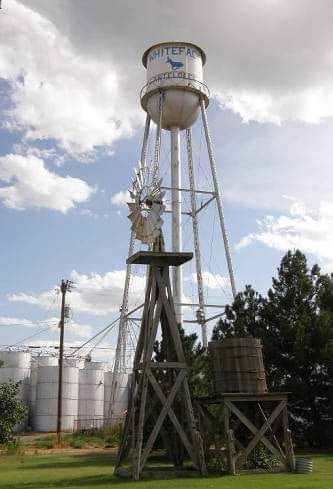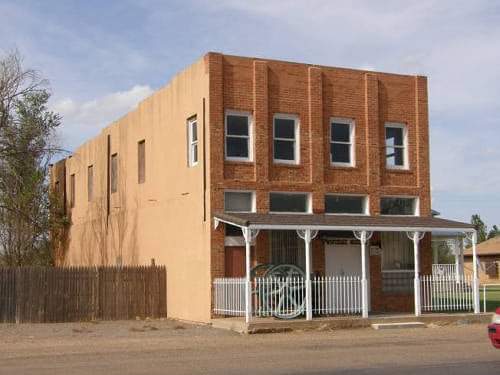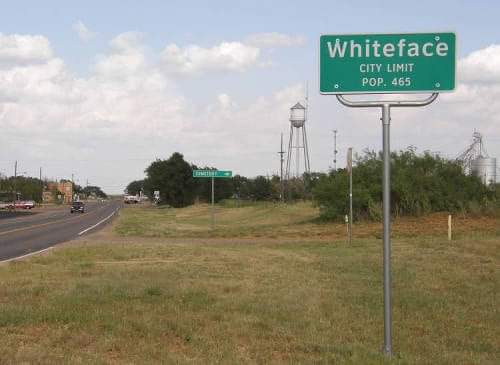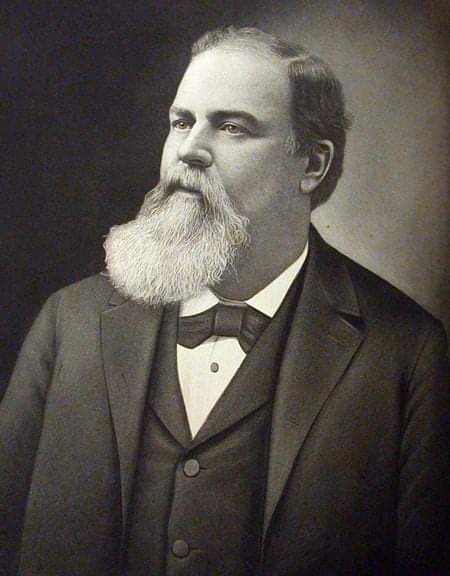All Things Texas 
Welcome to All Things Texas Monday edition. Since becoming a contributor to this page, I have found there is no end to the interesting ways towns acquire their names. We hope you enjoy tonight’s story as requested by Nancy Lee Younts.
Once upon a time, around 1898, a cattleman named C. C. Slaughter founded a ranch in west Texas. He bought 246,699 acres in Cochran and Hockley counties, leased more, and established the Lazy S Ranch, which he stocked with his Hereford herd and mixed breed cattle from his Long S ranch. On this ranch, a camp and pasture were named for the cattle, the Herefords, the whiteface Herefords. Tonight’s subject would take its name from the camp. Welcome to Whiteface, on State Highway 114 forty-five miles west of Lubbock in east central Cochran County.
A couple of decades later, in 1924, Ira P. DeLoach decided to start a town about four or five miles southwest of present-day Pettit in Hockley County. He staked off the townsite, and in September held a barbecue to help sell farmlands and town lots. Afterwards, a lumberyard was established by the Clem brothers, a grocery store was built by a Mr. Guthrie, a small hotel was established, and a two-room frame schoolhouse was built. That must have been some tasty barbecue!

In 1925, Whiteface residents moved their town some four or five miles southwest to be on the South Plains and Santa Fe Railway, which was then being completed from Lubbock to Bledsoe. The new townsite was originally the ranch headquarters of J. C. Whaley, who donated land for the town. Because the well at the location made a convenient railroad stop, the company built a depot and provided houses for its agent and foreman. In 1925 C. W. Word brought his family to the settlement, where they lived in a tent and furnished meals for the railroad workers. Whaley built a one-room schoolhouse that was ready in time for the fall semester in 1925. Later in the year the Whiteface-Lehman Common School District voted a $60,000 bond to build a brick school building in each community. Word established a post office on December 15, 1925, with Mrs. Word as postmistress.
A paved road from Levelland to Whiteface, completed in 1928, contributed to the prosperity of the community. In 1937, oil was discovered in the Slaughter fields south of the town. Whiteface reached its peak population in 1941, with an estimated 600 residents. The town was incorporated in 1945, and the following year a road was paved from the town to the Mid-Continent Petroleum Corporation fields, nine miles south. In 1947 a brick high school was built.
In July 1949; Miss Amelia Anthony decided to relocate the nine girls of Girlstown, U.S.A., a home for unfortunate girls, from Buffalo Gap, Texas, to Whiteface. Oil and farming contribute to the Whiteface economy along with several large ranches which lie outside the city limits. The town's population declined during the 1950s and 1960s, and by 1978 it was estimated at 365 residents. In 1980 it had increased to 463. The Santa Fe Railroad line through the town was abandoned late in 1983. In 1990 the population was 512. The population dropped to 465 in 2000.
This history demonstrates that towns can be named for anything at all: a railroad official, a landmark, a politician, a child, or even a cattle breed. We hope you enjoyed this look at Whiteface and will share it.



City of Whiteface would like to thank All Things Texas for this article follow them on Facebook "All Things Texas"